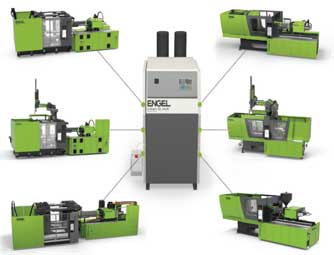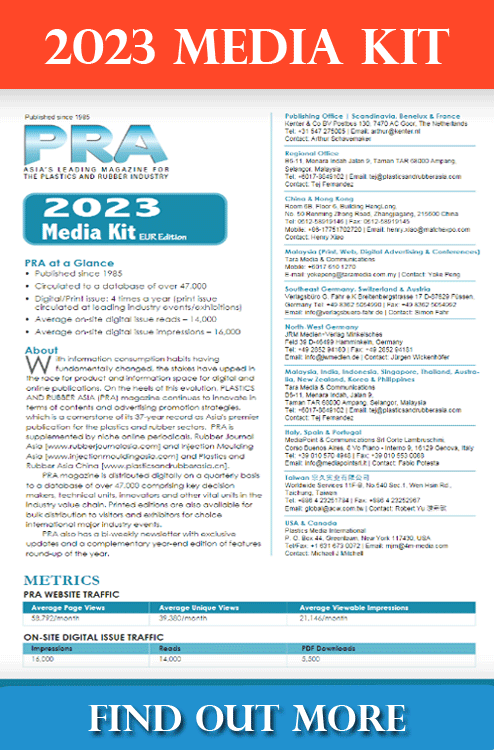Engel’s improved cost efficiency in structural foam moulding

Austrian machine maker Engel says it has improved the cost-effectiveness of structural foam moulding with its new e-foam XL multi central gas supply units. Another new feature is that parts do not require any additional overhead, but leave the injection moulding machine ready to fit with a structured class A surface.
Structural foam moulding is more popular than ever. It saves raw material, energy and weight, supporting the objective of producing and using plastic parts in a more sustainable way by doing so.
At K2022, Engel presented a new type of system technology for plastics processors who produce parts in parallel on several production cells using the structural foam moulding process. Where each injection moulding machine previously required its own gas supply, Engel now offers the e-foam XL multi, a central unit for supplying several injection moulding machines with highly compressed nitrogen for structural foam moulding.
Only the plasticising and control technology is still decentralised on the individual machines. This new solution sees significantly reduced capital outlay for structural foam moulding and makes a major contribution to reducing unit costs.
The new modular e-foam XL multi systems, based on US firm Trexel’s MuCell technology, are offered exclusively by Engel.
Together with automotive parts maker Faurecia, a Forvia Group company, Engel demonstrated sample parts produced at K2022, with a sophisticated surface structure, on an Engel duo 1000 injection moulding machine.
Furthermore, the new MicroJect Advanced process developed by Faurecia’s interior systems business unit, Faurecia Interiors, based in Hagenbach, Germany, and Eschmann Textures International (Gummersbach, Germany) was also used.
This makes it possible to produce lightweight visible components with a high-quality class A surface using only structural foam moulding.
Among other things, a new mould technology is responsible for this leap in development. Ceramic coatings in the cavities prevent the otherwise typical foam streaks, weld lines, tiger stripes or gloss differences appearing on the surface of the foam moulded part. Additionally, different surface structures can be created directly in the injection mould via the cavity coating.
In addition, the new materials developed by Faurecia Interiors for structural foam moulding contribute to the high surface quality. A talc-filled PP with a recycled material content of 30% of the IniCycle type was processed during the K show, for example. IniCycle is suitable for all physical and chemical foam moulding processes.
Structural foam moulded parts no longer need to be painted, and there is no need for additional energy- intensive process technology, such as intermittent mould heating, for parts in customer-facing applications.
In general, structural foam moulding requires less energy and raw material, and uses lower clamping forces, than compact injection moulding. The dissolved blowing agent improves the flowability of the molten plastics. In addition, the foam moulding pressure, which is independent of the location, enables thicker ribs to be moulded. These effects can be used to reduce the wall thickness, which has a positive effect on the required cooling time and in turn on the cycle time.
(IMA)Subscribe to Get the Latest Updates from IMA Please click here
©2022 Injection Moulding Asia. All rights reserved.


















